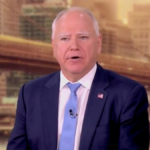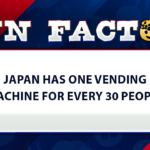US Top News and Analysis
Market volatility looks here to stay: Yields are still rising, a war is raging, and it’s uncertain whether interest rates will stay higher for longer. Last week, the yield on the 10-year U.S. Treasury note was above 4.9% for the first time since 2007 , continuing its upward trajectory this year. Investors continued to consider geopolitical risks from the Israel-Hamas war and the United States’ tightened restrictions on artificial intelligence chip exports to China. Those conditions have triggered warnings that higher rates and a strong stock market are unsustainable , and that investors should stay underweight on stocks because of higher rates . Meanwhile, a closely watched Wall Street survey from Bank of America showed investors have increased their cash allocations and are maintaining a pessimistic outlook on growth and the economy. Here’s how portfolio managers are investing right now. Go for bonds Though volatility in the bond market has led to losses, some fund managers are saying that it’s time to get back into this asset class, given that yields are high. David Katz, chief investment officer at Matrix Asset Advisors, said bonds are a better bet than money market funds right now — for those with a two- to four-year investment horizon. Money market funds typically include short-term Treasurys. “We think fixed income is attractive for the first time in a long time and suggest building 18-month to 7-year fixed income portfolios,” he said. He added that he expects yields to move lower over the next three to 12 months — after the surge in intermediate and longer-term rates. Katz predicts that bonds will return 4.5% to 5% in the next few years, up from 1% to 1.5% in the past decade. Bryn Jones, head of fixed income at U.K. investment management firm Rathbones, told CNBC Pro that he thinks rates are nearly peaking, and he is looking to add duration back into his portfolio — including longer-duration U.K. gilts, or government bonds. “The current market dynamics are throwing up good opportunities,” he said. “When there is a move from 14-day moving average yield to a peak we buy duration, when there’s a move down to the bottom of our range in yield, we sell. This is helping to generate positive performance versus our peers,” Jones added. Bond yields move inversely to prices — that means a peak in interest rates may signal that bond prices have bottomed. He added that investment-grade bonds in particular are looking attractive. “Default rates in IG credit tend to be fairly low, with average default rates of around 1% over 5 years. Currently what is being priced into IG is too much default risk, we believe,” he said. Hide in short-term Treasurys Short-term Treasurys have been popular for a while now. But portfolio manager Paul Meeks told CNBC Pro that he’d continue to “hide in” U.S. Treasurys that mature within zero to three years, given the uncertainty around interest rates. Meeks believes that the U.S. Federal Reserve will probably hike rates one more time before the year is out. He likes these exchange-traded funds: the iShares Short Treasury Bond ETF, which invests in 0-12 month Treasurys, and the iShares 1-3 Year Treasury Bond ETF, which invests in 1-3 year Treasurys. “U.S. Treasurys have no credit default risk. And the other reason for the short term Treasurys, is if you hide in the very short term Treasurys, they also don’t have interest rate risk,” Meeks said. When interest rates rise, bond prices typically fall as existing bonds with lower yields become less attractive. But short-term bonds are less volatile because of their shorter maturity periods. Alternatives to defense stocks Investors usually buy defense stocks during times of war and conflict as governments increase their defense spending. But those with an ESG focus in mind usually avoid them. Pella Funds Management is one of them. Steven Glass, managing director at Pella Funds Management, said the company’s fund does not invest in defense stocks. “There are ways one can make money though in a heightened risk environment and one of those ways are with the derivative exchanges,” he said. He named CME Group , the world’s largest derivatives exchange, which Pella has a position in. “It is a play on heightened fears and risk,” he said. Heightened volatility usually results in increased trading volumes. Glass named one more stock he described as a “risk-off position”: insurance broker Marsh McLennan. “Insurance is something that people need through all market environments,” he said. International stocks Meeks said he’s interested in global developed markets outside the U.S. — excluding Germany. He listed two semiconductor stocks he likes: the Netherlands’ ASM and Taiwan’s TSMC. He also likes Chinese internet stocks, but said he would wait before buying them. “What I want to do is wait for the troubles in China to moderate particularly this issue with all the real estate problems they’re having,” he said. He would also go for dividend-paying stocks that are more defensive in nature. — CNBC’s Michael Bloom contributed to this report.
Author Profile
Latest entries
 ScienceOctober 22, 20241 AirBnB tweak could help slow rising home prices
ScienceOctober 22, 20241 AirBnB tweak could help slow rising home prices HeadlinesOctober 22, 2024Tim Walz pressed on 'The View' about past misstatements: 'I speak honestly'
HeadlinesOctober 22, 2024Tim Walz pressed on 'The View' about past misstatements: 'I speak honestly' ScienceOctober 21, 2024What’s behind the rise in ADHD diagnoses?
ScienceOctober 21, 2024What’s behind the rise in ADHD diagnoses? HeadlinesOctober 21, 2024Fun Facts: The country with the highest density of vending machines in the world
HeadlinesOctober 21, 2024Fun Facts: The country with the highest density of vending machines in the world

